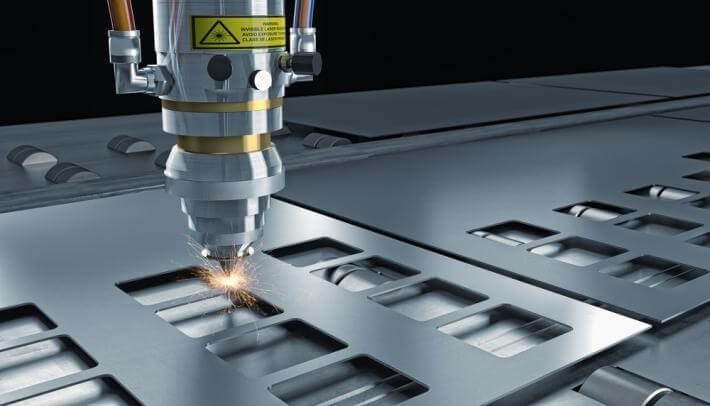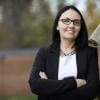A Nobel Prize-Worthy Idea: What Is Chirped Pulse Amplification?
How does the laser technology that earned the 2018 Nobel Prize in physics come into our everyday lives?
Sabrina Stierwalt, PhD

Listen
A Nobel Prize-Worthy Idea: What Is Chirped Pulse Amplification?
The 2018 Nobel Prize in physics was awarded to three physicists, Arthur Ashkin, Gerard Mourou, and Donna Strickland, for their innovative work to develop techniques that make lasers more widely applicable in everything from medicine to manufacturing.
Half of the prize is being shared by Mourou and Strickland for their invention of what is known as “chirped pulse amplification” (or CPA for short), a technique they developed together in the 1980s. Strickland was a graduate student at the University of Rochester at the time of this incredibly important work: CPA was the basis of her dissertation and their discovery was presented in her first ever scientific publication. Strickland became an inspiration in 2018 as only the third woman to ever be awarded the physics prize in the Nobel’s 117-year history after Marie Curie in 1911 and Maria Goeppert-Mayer in 1963.
What Is Chirped Pulse Amplification?
Chirped pulse amplification (or CPA) is a way of amplifying a laser pulse without destroying the amplifying medium, or, in other words, the material the laser pulse is traveling through, which in turn prevents further amplification.
You may recall from a previous episode that lasers are coherent beams of emission meaning that all of the light particles leave their source in unison and in one direction (as compared to a flashlight, for example, which sends out diffuse light in all directions). An ideal laser is also monochromatic, which means it emits only at one wavelength or frequency, and some laser applications require the laser be as close to single-color as physically possible. However, other applications, like those that require a tunable or ultrafast laser, use lasers with emission over a range of frequencies or colors, like the titanium-sapphire laser. In either case, the focused, high energy nature of lasers makes them ideal tools when precision is required, like for precise cuts in the human body or for removing unwanted materials in manufacturing.
Our use of lasers used to be limited to weaker lasers, not because we couldn’t create more powerful versions, but because the resulting laser emission would enter a nonlinear regime, which is usually scientist-speak for “things go unpredictably haywire.” The resulting high energy pulses could destroy their surroundings, and sometimes the laser-producing equipment itself would be damaged. The original laser beam’s desired properties could also be altered which could affect the laser’s precision, often the whole point of using such focused emission in the first place.
CPA allowed more powerful lasers to be used without these potentially damaging side effects and thus expanded the possibilities for laser strength and use. As an added bonus, using CPA technology resulted in more compact laser-producing equipment as well.
The short description is that the innovative difference in the approach of CPA was to temporarily stretch the laser pulse out in time before it gets amplified. This simple stretching avoids the destruction involved in generating more powerful lasers. You can think of the stretching as spreading the components out over different locations and times so that the intensity is not all encountered at once.
A more detailed description starts with an initial short pulse that is sent through a pair of gratings or prisms—you can think of the toy you had as a kid that separated white light into its individual color components so that you see a rainbow. These gratings disperse the pulse’s light or spread it out in time by a factor of 1,000 to 100,000 times. They accomplish this spread by sending the lower frequency components of the pulse (akin to redder colors) along a shorter path than the higher frequency components of the pulse (akin to bluer colors). The laser pulse is now considered “chirped” because the high frequency components lag behind resulting in a longer pulse duration.
The pulse is now longer and of lower power, so its safe to amplify without losing any of its signal or information. Once the pulse is amplified, the result is a higher energy pulse but one that is still long in duration and so can pass through its medium more safely. This long, amplified pulse is then sent through a second pair of gratings that basically reverse the work of the first pair of gratings: the pulse is recompressed in time, resulting in an amplified version of its original state.
Why Do We Need Chirped Pulse Amplification?
CPA technology may sound a bit obscure but the technique is invoked in many common uses of lasers including in research, industry, medicine, and commercial manufacturing. In fact, CPA is used by nearly all the most powerful lasers, i.e. those with more than 100 terawatts of power. That’s 1 trillion watts. Here are just a few applications of CPA:
- Manufacturing of smartphone screens: as many of us know all too well, the glass screen on our smartphone can be thin and brittle, so you need a precise and high-powered laser to remove defects from the surface.
- Laser eye surgeries like Lasik: the cutting of the lens of the eye to reshape it in order to correct vision requires a precise and fast-acting tool that can make just the right cut without damaging or heating up any surrounding tissue
- Treating cancer: In cancer-fighting proton therapies, lasers speed up protons for precise targeting of a tumor without destroying the healthy tissue around it. These proton beams tend to be more easily controlled than traditional radiation which involves X-rays and so may lead to fewer side effects and may be more useful in forms of cancer where precise removal of tumors is more important, like brain cancer.
- Mimicking plasma conditions like those powered by supermassive black holes: obviously astrophysicists and particle physicists are not able to pluck stars down from the sky in order to study them up close, but we can recreate some of their high-energy conditions in the lab to better understand stellar interiors thanks to powerful lasers enabled by CPA.
Despite her innovative work on CPA technology and being the first woman to be awarded the Nobel Prize in physics in 55 years, Strickland was not a full professor at the University of Waterloo when her prize was announced. In other words, she had not been considered for a promotion to the highest rank of full professor at her institution. She also had been deemed not important enough for her own entry by Wikipedia only five months before earning the Nobel Prize.
There are those that would say the lack of qualified women explains why only 49 women have been awarded Nobel Prizes compared to 844 men over the Prize’s 117 year history, but Strickland’s history of a lack of obviously-deserved recognition suggests otherwise.
Until next time, this is Sabrina Stierwalt with Ask Science’s Quick and Dirty Tips for helping you make sense of science. You can become a fan of Ask Science on Facebook or follow me on Twitter, where I’m @QDTeinstein. If you have a question that you’d like to see on a future episode, send me an email at everydayeinstein@quickanddirtytips.comcreate new email.
Image courtesy of shutterstock.

